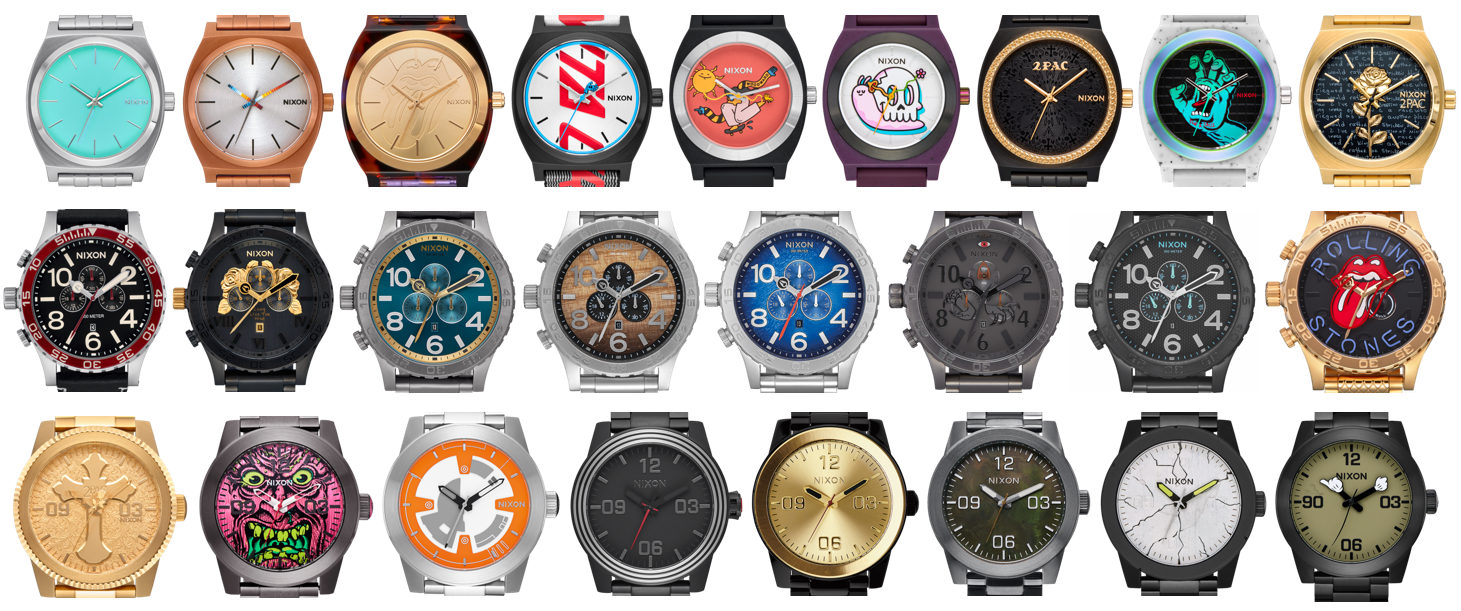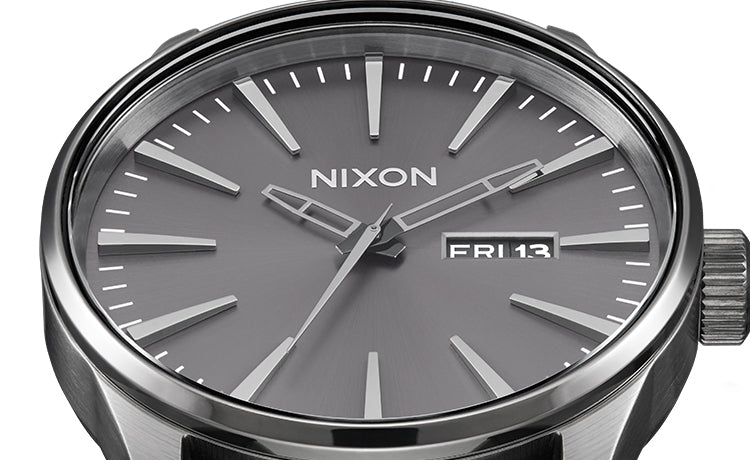Watch dials are one of the most noticeable parts of a wristwatch. A watch dial is what gives the watch personality.
But what exactly is a watch dial? Keep reading to learn all the basics you need to know about this prominent watch part.
First, let's start with the watch dial basics.
What is a Watch Dial?
Watch dials are a main part of a watch, found within the watch case and behind the crystal. When you read a watch to tell the time, you're looking at the dial. Hour and minute markers and the watch hands are a few features that occupy space on most watch dials.
In addition to hour and minute markers and hands, watch dials might also include sub-dials that serve additional functions. But more on that later.

Now that we understand a basic overview of what a watch dial is, let's get into the specifics.
The basic elements of a watch dial will be shared among most watches, whether we're talking luxury watches, high-end automatic watches, or budget fashion watches.
Here are the basic components of a watch dial.
Watch Dial Main Components
Watch dials may include some or all of the following:
- Dial base: this is the most essential piece of a watch dial. All of the following components are placed on top of (or into) the dial base.
- Hour and minute markers: these might be in the form of letters, numbers, Roman numerals, or some other style.
- Watch hands: hands for hours, minutes and seconds rotate around the dial and make it possible to read the time.
- Brand logo: many brands will use the watch dial as a place to represent their brand name or logo.
- Sub-dials: sub-dials are an example of a watch complication. On a chronograph watch, for example, sub-dials might do something like act as a stopwatch function. Usually, these sub-dials aren't essential for telling the time at any moment, but there may be exceptions to this.
- Date window: date windows are another example of a watch complication. This type of complication might tell you what day of the week or day of the month it currently is.
- Artwork: occasionally, watches feature artwork on the face of a watch for a unique dial design.
In the following sections, we'll dive into more detail on a few of the main watch dial components that we've noted above.
First, let's start with the dial base.
Watch Dial Base
There are a wide variety of materials that can be used for a dial base. The most common material used to make watch dials is some form of metal.
For example, stainless steel or brass watch dials are popular options. These metals are commonly used because they are durable and are receptive to various finishes.
Here are some other common dial base materials:
- Enamel: a highly fragile material, but coveted by watch collectors for their intricate craftsmanship.
- Ceramic: this type of watch dial material is highly scratch resistant.
- Mother-of-Pearl: these watch dials are considered more elegant because of their iridescent appearance.
This is by no means an exhaustive list. And it's important to keep in mind that watch dials can be highly diverse, just check out the skeleton dial featured on the Nixon Spectra.
Next, let's dive into the hour and minute markers.

Hour and Minute Markers
The role of hour and minute indices on a watch is clear: they indicate the hour and minute... aka "time".
How markers are used on a watch dial may be less clear because there are so many different styles and materials that are used in watchmaking.
Let's dive into both marker types and applications.
Hour and Minute Marker Types
Hours and minutes may be indicated on a watch face in a number of ways. Here are a few of the most common you'll see:
- Arabic: watch dials that use Arabic numerals will feature common numbers to mark time. Think "1, 2, 3, 4, 5..." and so on.
- Stick: as the name implies, stick dials do not use numbers. Instead, lines or dots are used at regular intervals to mark time.
- Arabic and Stick: this type of watch dial uses a combination of both the "Arabic" and "Stick" marker types mentioned above.
- Roman: watch dials that use Roman markers rely on Roman numerals. So for example, instead of "4", it's "IV".
- Roman and Stick: these dials use a combination of "Roman" and "Stick" marker types.
- California: if you take Arabic, Roman and Stick markers and combine them on a single watch dial, you have "California".
That covers the basics for marker types. Now, let's get into how these types of markers are integrated onto (or into) watch faces.
Hour and Minute Marker Executions
It might not be obvious, but one of the most interesting characteristics of a watch dial is how the markers (or indices) are integrated.
Here are a few common methods of marker execution:
- Flat Print: this type of marker execution is the most basic. If hour and/or minute dial indices appear to be painted directly on the dial, it's a flat print.
- Up-Print: if hour and/minute markers appear to have some depth, or "relief" to them, they may be an up-print. This is done with multiple pass prints to raise the marker detail slightly above the dial base.
- Up-Label: to achieve this marker execution, a watchmaker may use a die cut metal to give the marker more relief than what is possible with up-print.
- Applied: this marker execution provides even more relief than both up-print and up-label. This is achieved by taking separate pieces that have "feet" on the back, and attaching these to the dial through small holes.
- Stamped: this marker execution is stamped directly into the watch dial. These may then be applied over with flat print or up-print. If a watch has a unique marker type, like imagery, it may possibly be stamped.

Watch Hands
The hands of a watch are necessary for its most basic function: telling time. The hands rotate around the watch dial and point to the dial indices, indicating the hour, minute and second.
Though the basic function of watch hands is simple to understand, there are variations how watch hands are implemented.
Here are a few to know:
- 3-Hand Dial: typically, each hand in this dial type is used to individually indicate hours, minutes and seconds.
- 4-Hand Dial: watches with a fourth hand may use that extra hand to accomplish an added function. One example would be a fourth hand used to indicate the time in a different time zone.
- Chrono Hand: chrono hands are used for chronograph watch complications. The purpose is to track time like a stopwatch.
Watch Dials in Conclusion
Watch faces are one of the most defining parts of any wristwatch. From the use of materials and colors, to the typography and how it's executed, to the hands and sub-dials, the potential for variety in watch dials is endless.
Now that you know a little bit more about what watch dials are and how they vary, you can make a more informed purchasing decision next time you're looking to buy a watch!
